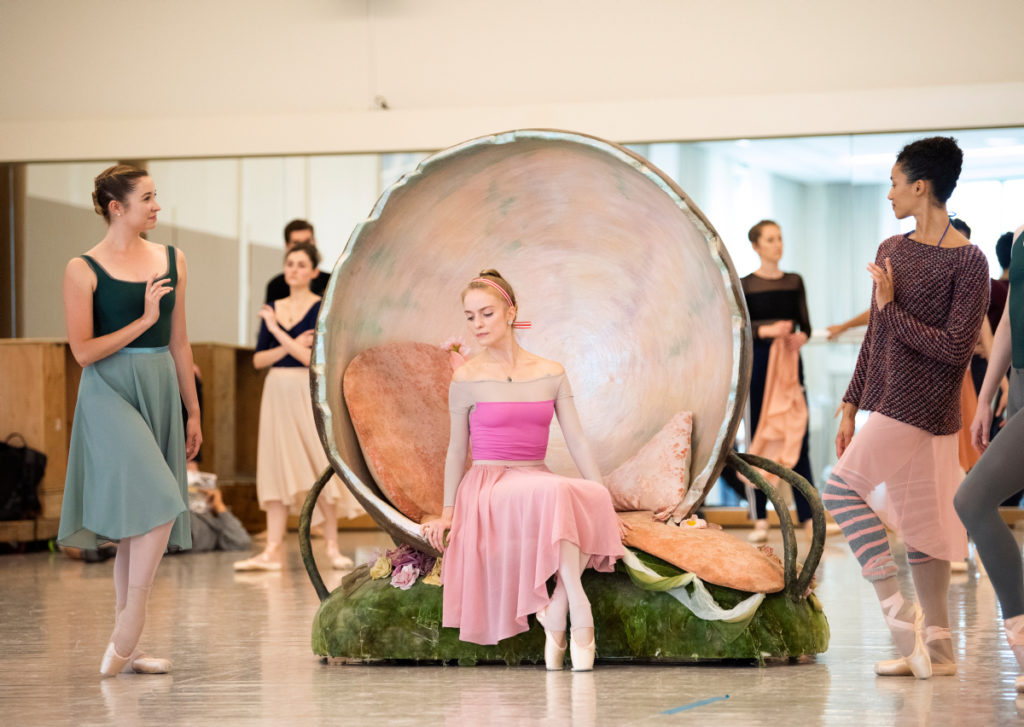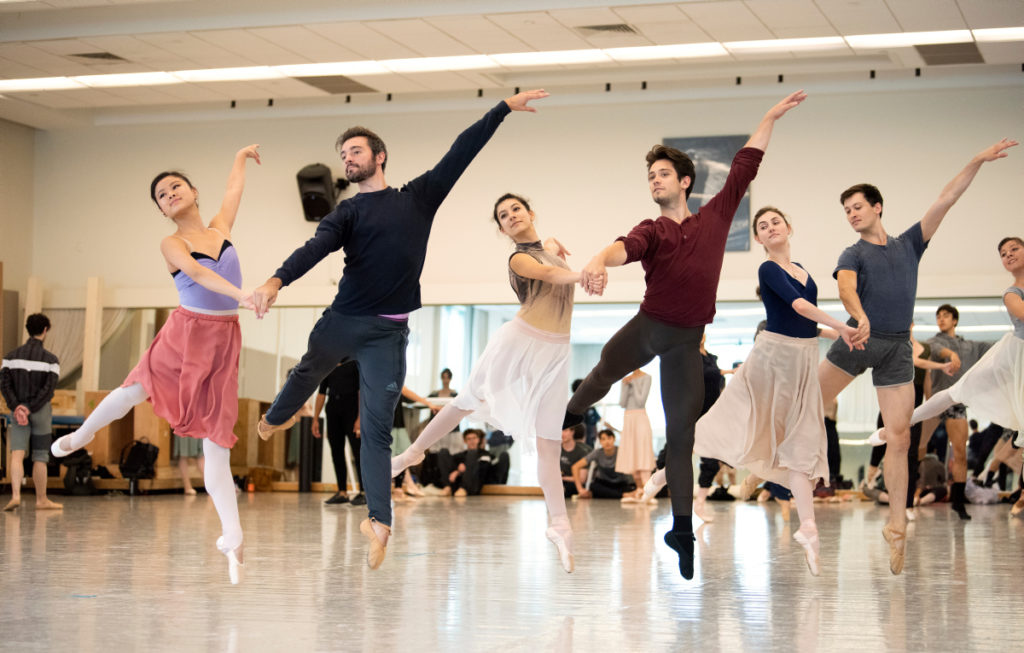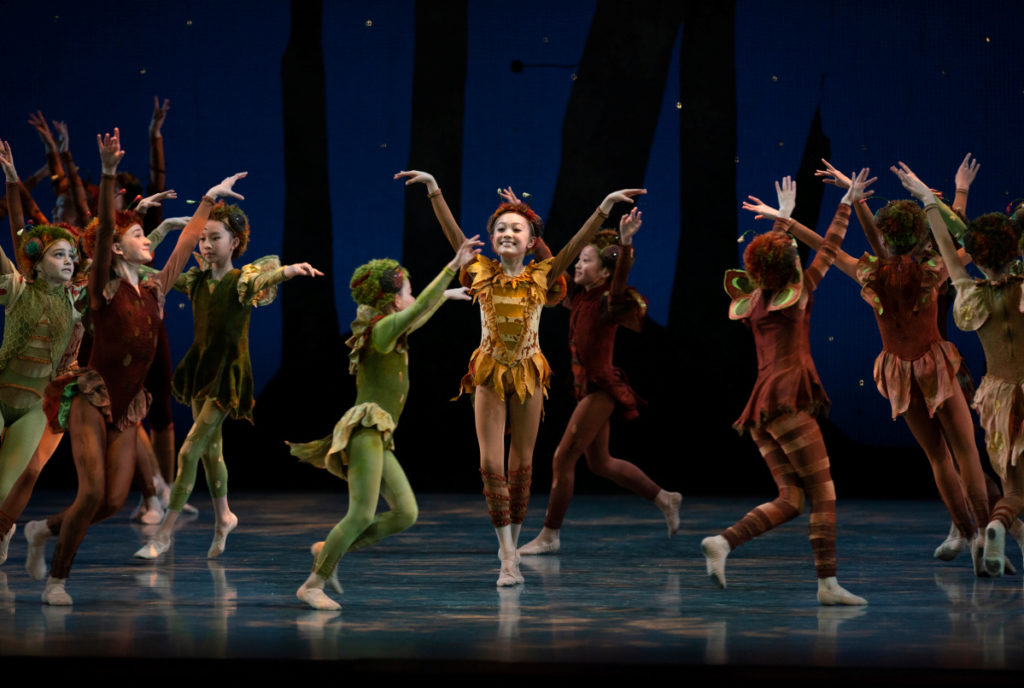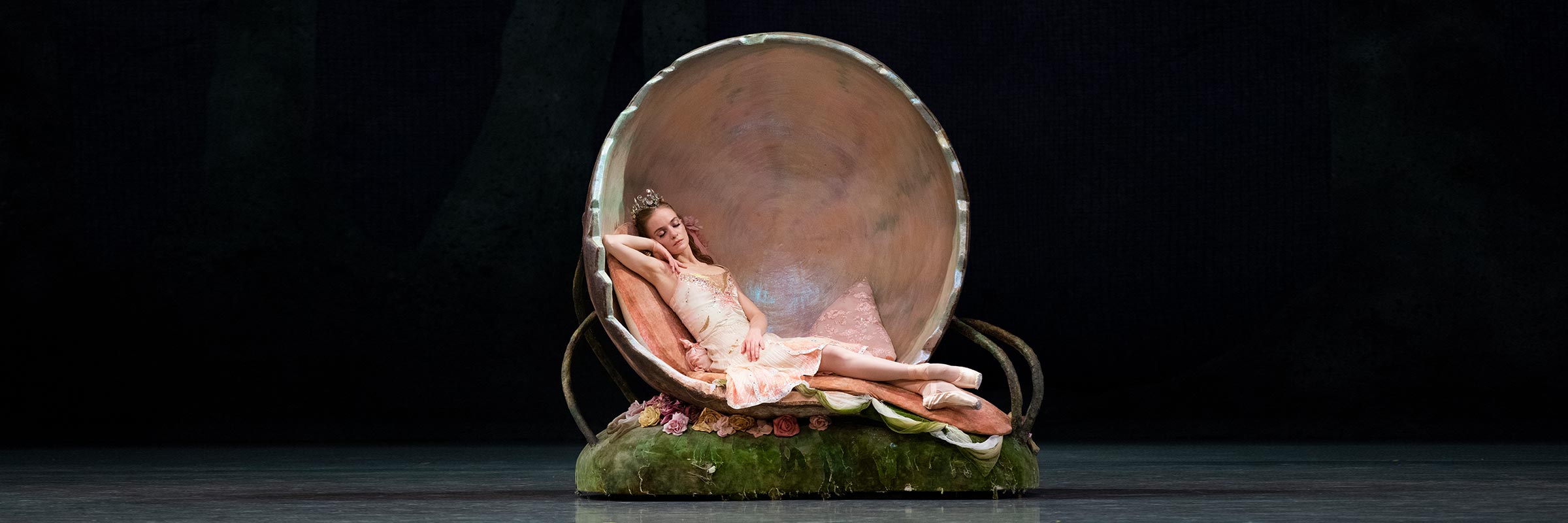About Balanchine’s A Midsummer Night’s Dream
Enter a magical, moonlit world . . .
“The course of true love never did run smooth,” laments Lysander in A Midsummer Night’s Dream. In Shakespeare’s comedy, an evening of mischief, merriment, and mismatched couples reaches a pinnacle when the fairy queen Titania falls madly in love—with an actor with the head of a donkey. It’s enchantment as revenge by the fairy king Oberon. The mishaps accelerate when the realms of fairies and mortals intersect in the forest after dark. Oberon and his servant Puck’s attempts to simplify the tangled relationships of two human couples only creates more misunderstanding.
The genius of Balanchine’s Midsummer is that he makes clear—entirely through movement—this complex tangle of relationships among feuding fairies and mismatched mortals crossing paths in a moonlit forest. “I think Balanchine did such a superb job with Midsummer,” says Artistic Director and Principal Choreographer Helgi Tomasson, who danced in Midsummer with New York City Ballet. “It has humor. It has suspense. It has love. And even if you are not a ballet aficionado, you immediately understand what’s going on.”

Creating Balanchine’s Midsummer
As a child, George Balanchine played the role of an elf in a production of the play at the Mikhailovsky Theater in St. Petersburg. The text stayed with him; decades later he would recite in Russian, “I know a bank where the wild thyme blows / Where oxlips and the nodding violet grows.” Balanchine considered creating a production of Midsummer for years before he actually created his two-act ballet in 1962. It was his second full-length story ballet (Nutcracker was first) and the first wholly original full-length ballet he had choreographed in America.
For Balanchine, the biggest inspiration for—and obstacle to—a full-length Midsummer had been the score. He adored Mendelssohn’s Midsummer music, but there wasn’t enough of it. Mendelssohn had composed music for A Midsummer Night’s Dream in two parts. After reading the play at age 17, he wrote a concert overture, a shimmering work capturing the magic and whimsy of the play in music. Sixteen years later, King Frederick William IV of Prussia commissioned Mendelssohn to expand upon this for Ludwig Tieck’s production of the play. Mendelssohn wrote incidental music that included songs (“Ye spotted snakes”), melodramas (text spoken over music), and purely orchestral music such as the well-known Wedding March.
“Balanchine took time to find all the perfect pieces of music that would weave the ballet together musically,” explains Balanchine Trust répétiteur Sandra Jennings, who staged Midsummer on San Francisco Ballet. His knowledge of music was exceptional for a choreographer; the son of a composer, he grew up playing the piano and studied music theory and piano at the Petrograd Conservatory of Music while dancing in the Mariinsky Ballet. In assembling a score for Midsummer, Balanchine drew from several other Mendelssohn works: overtures to Athalie, The Fair Mesuline, The First Walpurgis Night for the first act, and Symphony No. 9 and the overture to Son and Stranger in the second act.

A SERIOUS BALLET WITH A COMEDIC TWIST
Balanchine Trust répétiteur Sandra Jennings says that one of the most challenging elements of setting the ballet is helping the dancers embody Shakespeare’s characters in a way that both propels the story forward and captures its humor. “A lot of dancers are good at acting in serious roles. This is a serious ballet with a comedic twist,” she says. “It shouldn’t be over the top, but it does need to be funny.”
Jennings balances her own experience and knowledge of the characters with allowing dancers to add their own imprint to the roles. The character of Puck, mischievous and enigmatic, is particularly reflective of the dancer inhabiting the part. The original Puck, as danced by Arthur Mitchell, was otherworldly and ethereal. “When a dancer really commits to it, I try to let them find it themselves,” says Jennings during the original rehearsals at SF Balletin 2019. “Arthur Mitchell was an amazing Puck, light like a fairy and mysterious. I feel like Lonnie [Weeks], who has an amazing imagination, is a little like Arthur; whereas Lucas [Erni] is creating a bit of a funnier character, and Esteban [Hernandez] is so cute and mischievous. All of these characterizations are completely acceptable and wonderful.”
Jennings also stresses that within the confusion among the mismatched love rectangle of Hermia, Lysander, Helena and Demetrius, there is innocent disregard, instead of any malice. “When we first started rehearsing, I felt like the Demetrius-es were a little too rough. And that didn’t feel right in this era,” she says. “So then they toned it down, but they toned it down too much so that it wasn’t funny. It’s a balance.”

The children who dance as bugs have some of the ballet’s sweetest and most magical moments: introducing the fairy realm; consoling the heartbroken Helena, then falling asleep in a tiny heap; zipping across the floor as Oberon skims just above it; and reclaiming the fairy realm at the end of the ballet. There are 25 students from San Francisco Ballet School in the ballet: one as a child fought over by Titania and Oberon and 24 as bugs who form a corps de ballet. “In my experience, it’s a life-changing experience for kids to do this ballet,” says Jennings. “Balanchine was so great with children. He treats them as if they are part of the company. They’re out there dancing with the leading dancers, in a magical world.”
It’s a magical world Jennings hopes we can all inhabit, at least for a few hours. “I was thinking, the first week I started working on the ballet here in San Francisco, that in this day and age, when it’s a rough time in the world, this is a magical place to go to. I wondered if the dancers would go there, it they could find it,” she says. “But I’m so impressed with this company. These dancers have been really committed to it.”
by Caitlin Sims








